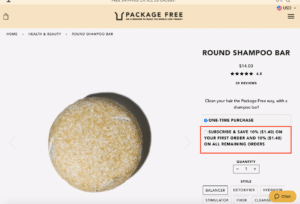
Monthly Recurring Revenue (MRR) can help you make budgeting decisions, predict business growth, and decrease volatility. Not all business models are suitable for MRR, such as those that sell individual products, but many businesses are expanding in innovative ways to add a stream of MRR. There are several ways to increase monthly recurring revenue, and expand your business to start gathering MRR.
What is Monthly Recurring Revenue (MRR)?
Monthly Recurring Revenue (MRR) is the income you can expect to generate every month, usually through some type of subscription. You can calculate your MRR by multiplying your total subscribers by their actual monthly subscription value, or the average subscription value.
Some businesses, such as software as a service (SaaS) businesses, deal almost exclusively in MRR. Others, such as retail businesses, don’t work with MRR unless they add a subscription-based service to their business model. Since this provides a more reliable income stream, more and more companies are integrating MRR into their business model.
How to Increase Monthly Recurring Revenue (MRR)
There are essentially three ways to increase monthly recurring revenue: gain more subscribing customers, upsell existing customers to a higher tier, and reduce customer churn (customers unsubscribing or lowering their subscription). Since MRR is only a measure of revenue and not profit, this doesn’t include lowering the costs. However, increasing total profit would include lowering costs of operating the subscription service, cost of gaining new customers, or costs of moving customers to a higher service tier.
Price Discrimination
Price discrimination makes your service more accessible to some, and more valuable to others. By creating multiple service tiers at different prices, you reduce the barrier of entry to those fewer resources or less investment in the problem. You also increase the perceived value of the higher tiers of your service.

SaaS businesses like Hubspot generally divide subscriptions into three tiers to appeal to different market segments. Do your service tiers make sense for your target markets?
A common example of this is SaaS businesses offering service tiers for individuals, businesses, and enterprise businesses. Each tier is more expensive, but offers a deeper and wider scope of features. Since these groups are the business’s primary markets, it makes sense to create a tier for each of them.
Optimal price discrimation means giving each customer exactly the services that they want for exactly the price that they will pay. Of course, this ideal world isn’t realistic; it’s impossible to know exactly what every customer wants and what they’ll actually pay for. However, it does indicate that more tiers equates to more customers and more sales, as long as it doesn’t become confusing.
Here are a few tips to work price discrimination into your subscription:
- Try à la carte: allow customers to pick and choose functions they need, and pay only for what they use.
- Poll your markets: You don’t need to know every customer’s desires and price points. But you should know, on average, what your primary markets want and what they’ll pay.
- Size vs Scope: Does your subscription scale by both size and scope? Remember that the number of users can be just as important as the number of features.
Targeted Advertising
With your primary markets, their needs, and their price points more clearly defined, you have more information to target your ads. With more detailed ad targeting, you might show your service to fewer people, but these people will be more likely to become customers. Not only will you be adding more subscribers and increasing your MRR, but you might also decrease your total advertising costs, since ads with higher click rates tend to cost less per impression.
Consider ad targeting based on the following metrics:
- Business size: If you’re targeting businesses in particular, the number of employees is a great way to narrow down your audience.
- Income: Knowing how much your service costs monthly gives you a general idea of how much disposable monthly income your audience has, and how much they’d have to make to be a viable subscriber.
- Profession: If your subscription serves a particular industry, you can easily narrow your ads based on job title.
Where you place your ads will also be an important part of increasing your MRR. Online platforms give you a wide range of ad targeting options, but you should also consider what your audience uses the platform for. SaaS ads will most likely work best on work-oriented platforms like LinkedIn, while entertainment-based subscription services might do best on Facebook, and fashion or special-interest subscriptions might work best on Instagram.
Free Upsell Trial

Package Free, an eco-friendly retailer, highlights discounts customers receive from signing up for a subscription instead of purchasing products individually.
Free trials are a great way to get customers to sign up for your service, but they can also be a great way to encourage customers to move up to the next tier of service. For a limited period, give your customers an upgrade. You might do this with a select group of customers who are most likely to stay at this new tier, all customers, or with a select group who signs up.
If you use this strategy to increase your MRR, make sure to keep the following in mind:
- Easy movement: Customers must be able to move between tiers without disruption. If briefly testing new features will negatively affect the overall performance of the service, this might not be a good strategy.
- Let customers decide: Some customers might not want to move to a new tier. New features might change their experience or over-complicate their use of the service. Make sure to ask your customers if they want a free upgrade first.
- Test your process: Make sure to test your free upgrade before you offer it. If your customers get accidentally billed, or locked into a contract without knowing it, they won’t be pleased.
- Ask for feedback: If your customer didn’t want to continue to use the new tier, ask why, and make improvements.
Information-Based Improvements
The best way to increase your MRR might also be the simplest, and the most overlooked. To make your subscription service better—and therefore more valuable to more customers—ask your customers what they want. Too many businesses change their subscription or service models without asking their customers first. This puts you at risk for wasting time and energy on changes that customers don’t really want, and won’t actually pay more for.
There are a few ways to gather customer feedback that will help you make information-based improvements. Consider the following:
- Surveys: Send out a survey to existing customers asking what improvements they would like to see to your service.
- In-App Surveys: If your customers use your service online, send a brief multiple-choice poll asking which improvements or extra features would be most valuable to them.
- Free Trial End Survey: If a customer uses a free trial, but decides not to use your service, ask them why. Ask what features you could add that would change their mind.
- On-Board Survey: When a customer newly signs up for your service, ask them if they’ve used a competitor before and, if so, what they liked, didn’t like, and why they switched.
Customer Retention Team
Keeping the customers you have is just as important as earning new customers. A customer retention team can help to lower customer churn and keep your current customers from moving to competitors, or moving to lower tiers of service. For your customer retention team to be effective, they must have the power and independence to give customers what they need. When building your customer retention team, keep the following in mind:
- Utilize feedback effectively: Your customer retention team is in the perfect position to gain valuable feedback. Give them tools to organize and utilize the feedback they receive.
- The power to help: Your customer retention team should have the power to give discounts, extra features, free subscriptions and other incentives to solve problems and keep customers happy.
- Integrate your team: Your customer retention team can be a valuable part of many of the previous strategies mentioned above. Keep your team updated and well-informed on these strategies.
How to Start MRR

Many consumer products, from cosmetics to art supplies to wine and many more, have started subscriptions instead of selling individual products. Would this be possible for your business?
Not all businesses are suitable for MRR, but many businesses are integrating MRR in innovative ways. If you don’t have MRR yet, consider how you might add subscription services to your current business model, such as:
- Information: You’re the expert, and customers might pay for your expertise. Consider monthly educational services such as books, magazines, classes, or webinars. However, make sure that this doesn’t interfere with your content marketing strategy.
- Samples and bonus products: If you sell consumer products, you might offer regular samples for a monthly fee, offer regularly scheduled refills, first access to new arrivals, or product packages curated to the customers’ interests.
- VIP membership: Service business might offer customers a discount and extra features with a monthly membership, such as automatic upgrades or small gifts.
- Strategic partnership: You might not be able to offer MRR alone, but consider a strategic partnership with another business. You might promote a related business for a monthly fee, or offer select services in partnership with another business. Consider what businesses would value your endorsement or promotion.
Knowing how to increase your monthly recurring revenue can help balance your income and support long-term growth. Think creatively, talk to your customers about their needs, and see what your competitors are doing. With the right strategy, you can start or increase your MRR to support long-term growth and stability.
